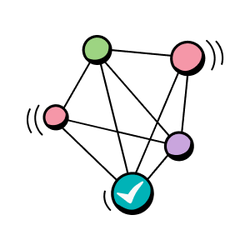
5 common people analytics challenges (and how to overcome them)

These days, it’s all about data – and that rings especially true in HR. All of your initiatives, suggestions, and changes need to be supported by real data. That’s what helps you build a compelling case for business leaders.
But while data adds credibility, working with it can be challenging. From surfacing the right information to connecting those numbers to the broader business objectives, HR professionals face various hurdles in not just getting the people analytics they need but also making the most of those insights.
We connected with David Green, Managing Partner of Insight222 and co-author of Excellence in People Analytics, to talk through the challenges today’s HR teams face in leveraging people analytics – as well as how they can effectively overcome them.
Challenge #1: Connecting data to business problems
“Sometimes we’re focusing on the wrong things,” David says. “We’re focusing on a challenge which may not actually be a problem in our organization.”
That’s why David recommends this approach: Don’t start with the data. Start with the business problem you’re trying to solve. “If you just start with data and you ask an analyst to find some insights in the data, they’ll find some insights,” he explains. “But they might not be important. They might not relate to any business challenges the organization has.”
It’s smarter to take a more scientific approach: Identify the problem and then build hypotheses that you can test with analytics. “We have a tendency in HR to focus on HR outcomes and not business outcomes,” David continues. “Sometimes it’s just taking it to the next level.”
Solution: Culture Amp’s Retention Insights helps you stop the turnover of critical people before it’s too late. Using our people-science-informed framework, you can automatically combine HRIS and survey data to accurately understand, predict, and prevent turnover for any / all groups across your company.

See Retention Insights in action
Challenge #2: Using a fragmented tech stack
One of the big challenges HR professionals face comes back to logistics: They have to pull data from different systems. That’s not only time-consuming and effort-intensive, but it can also skew your results with inaccurate or even missing data.
That’s why it’s beneficial to have all of your HR data in the same system. It’s far easier to access and interpret accurate data, and it also ensures that the data can more easily be connected to other business objectives and efforts.
“If you’re actually trying to solve a business problem, you need business data as well,” David shares. “If, for example, you’re able to identify that a 1% increase in employee attrition has a five million dollar impact on the business, then you’ll likely quickly find a business leader who wants to solve the problem. But you can’t calculate that without the business data.”
Solution: Culture Amp’s all-in-one employee experience platform captures a range of accurate employee experience data – ranging from performance, engagement, and development – in one place.
Challenge #3: Supplementing and supporting the data
Even a people analytics leader recognizes that data alone isn’t a solution. David points out that data must be supplemented with plenty of thought, conversations, and external research.
“There are a lot of myths about why people leave,” he says, noting that research can be helpful in dispelling those myths. “The common one we always hear is people leave because of their manager.” But when you look at the academic research, that factor’s not at the top of the list.
When it comes to people analytics, it’s not enough to just surface digits and compile spreadsheets. HR leaders need to dig further and build a thorough understanding of what’s happening – and what steps they can take moving forward.
Solution: Culture Amp offers benchmark data so you can easily see how your survey results compare to your competitors.
Challenge #4: Storytelling with statistics
If you share a spreadsheet of HR data with a business leader, their eyes may glaze over. But when you use data to tell a compelling story about bigger business objectives, you’re likely to pique their interest.
David says that starts with quantifying the problem. “Can we actually understand how much it’s costing us?” he asks. “Because once you understand how much it’s costing the business, you tend to get senior executives more interested.”
David recommends going beyond just the numbers. Instead of just telling what the problem is, offer recommendations. “Storytelling is a big challenge,” he shares. “It’s almost like the last-mile challenge in people analytics.” Crafting the arc from problem to solution will help you make a more powerful impression on senior leaders.
Solution: Culture Amp’s Impact Analysis reviews survey questions and determines their influence on engagement outcomes so you can quickly identify where your actions can have the most impact.
Challenge #5: Upskilling and development
When it comes to people analytics, the right technology matters – but it’s not the only factor. David says organizations need to strike a balance: providing HR professionals with the right tools and technology to interpret data, as well as giving them the skills and confidence they need to put it all together and drive conversations.
David notes that organizations that are leading the way in people analytics do this type of employee development well: “They actually invest in upskilling their HR professionals in skills such as data literacy and storytelling. They’re able to capitalize on the investments they’ve made in technologies.”
In recent research, Insight222 identified five data literacy skills that empower HR professionals. An effective HR team is able to:
- Make actionable recommendations from insights
- Manage stakeholder relationships with business leaders
- Consult with business leaders to frame business questions and build hypotheses
- Interpret insights from data, reports, and dashboards
- Tell stories using data
Developing these skills gives your HR team the knowledge to use their tools and technology effectively and get as much return as possible.
Solution: Culture Amp’s People Scientists listen to customers’ goals and help them apply principles to improve their business.
Deeper than the digits: The power of people analytics
You know you need data to support your HR initiatives. But it’s not enough to collect and share numbers. Today’s HR teams need to be able to identify business problems, pull supporting data, tell a compelling story, and determine the most impactful actions.
That requires the right technology as well as the right skills. When both work together, you get more than spreadsheets and statistics – you get actionable insights and meaningful improvements across the entire organization.





